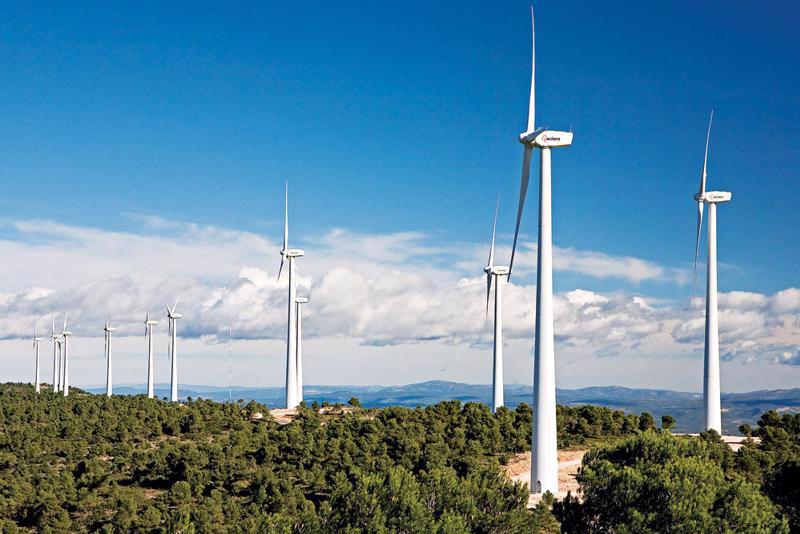Deputy Prime Minister Bui Thanh Son on April 15 signed Prime Ministerial Decision No. 768/QD-TTg, approving revisions to Vietnam’s National Power Development Plan for 2021 - 2030 with a vision to 2050 (commonly referred to as PDP8).
Substantial capacity growth by 2030
According to the revised PDP8, total installed power generation capacity is projected to reach between 183,291 - 236,363 megawatts by 2030, a 30 - 50 per cent increase over the previously approved capacity of 150,489 megawatts.
Renewable energy remains a top priority, with significant upward adjustments in development targets.
Onshore and nearshore wind capacity is now forecast at 20,066 - 38,029 megawatts, doubling to tripling earlier projections. Offshore wind has been significantly revised upwards from 6,000 megawatts to 17,032 megawatts, with operational deployment possible between 2030 and 2035 depending on technical feasibility and costs.
Solar power also sees a strong boost, with capacity targets raised to 46,459 - 73,416 megawatts, more than double the previous 20,000 megawatts. Biomass and waste-to-energy are set to contribute 1,523 - 2,699 megawatts and 1,441 - 2,137 megawatts respectively, while geothermal and other new energy sources will remain modest at 45 megawatts.
Hydropower will be maximally utilized within technical-economic limits, with a target capacity of 33,294 - 34,667 megawatts by 2030. Notably, for the first time in years, nuclear power has been reintroduced into the planning, with targets of 4,000 - 6,400 megawatts between 2030 and 2035 and a long-term goal of 10,500 - 14,000 megawatts by 2050.
Energy storage development is also emphasized, with pumped storage hydropower plants projected at 2,400 - 6,000 megawatts by 2030, and 20,691 - 21,327 megawatts by 2050. Distributed battery storage systems, located near solar, wind, or large demand centers, are expected to reach 10,000 - 16,300 megawatts by 2030 and nearly 96,000 megawatts by 2050.
LNG to play a central role in flexible power mix
In the thermal power category, LNG remains central to the flexible generation mix, with a capacity of 22,524 megawatts projected for 2030, accounting for 9.5 - 12.3 per cent of the system.
Domestically sourced gas power is expected to maintain 10,861 - 14,930 megawatts, while many LNG plants are expected to transition toward hydrogen co-firing or incorporate carbon capture and storage (CCS) technologies.
Coal power capacity will remain at 31,055 megawatts through 2030, but no new projects will be approved after that point. Coal-fired plants will be gradually converted to biomass or ammonia by 2050, with capacity at that time projected at 25,798 megawatts.
A new feature of the revised plan is the orientation toward electricity export, with 400 megawatts expected to be exported to Cambodia by 2030. By 2035, exports to Singapore, Malaysia, and other regional partners could reach 5,000 - 10,000 megawatts, a level expected to be maintained until 2050.
Conversely, electricity imports from Laos and China could reach 9,360 - 12,100 megawatts by 2030, representing 4- 5.1 per cent of Vietnam’s total capacity. Imports from Laos may be expedited based on technical and diplomatic conditions.
Renewables to dominate power structure by 2050
By 2050, total installed capacity is projected to rise dramatically to 774,503 - 838,681 megawatts, with renewable energy forming the backbone of the system. In particular, solar power capacity will reach between 293,088 - 295,646 megawatts (35.3 - 37.8 per cent of total power generation capacity), offshore wind will reach between 113,503 - 139,079 megawatts (14.7 - 16.6 per cent), onshore wind will reach 84,696 - 91,400 megawatts (10.9 per cent), and battery storage will account for 11.5 - 12.4 per cent of total capacity.
Nuclear energy is expected to provide a stable base load at 10,500 - 14,000 megawatts, representing 1.4 - 1.7 per cent of the total system.
The revised PDP8 also emphasizes the promotion of direct power purchase agreements (DPPA) and the production of new energy sources, aiming to contribute 30 - 60 per cent of renewable energy output, depending on market demand and infrastructure development.
The guiding principles behind the revised PDP8 are regional balance, system feasibility and safety, and alignment with sustainable economic growth, energy security, and national defense—all in the context of the global energy transition.
The Ministry of Industry and Trade will continue to review progress and report to the Prime Minister, proposing further adjustments as needed to ensure long-term energy security and system flexibility.









 Google translate
Google translate